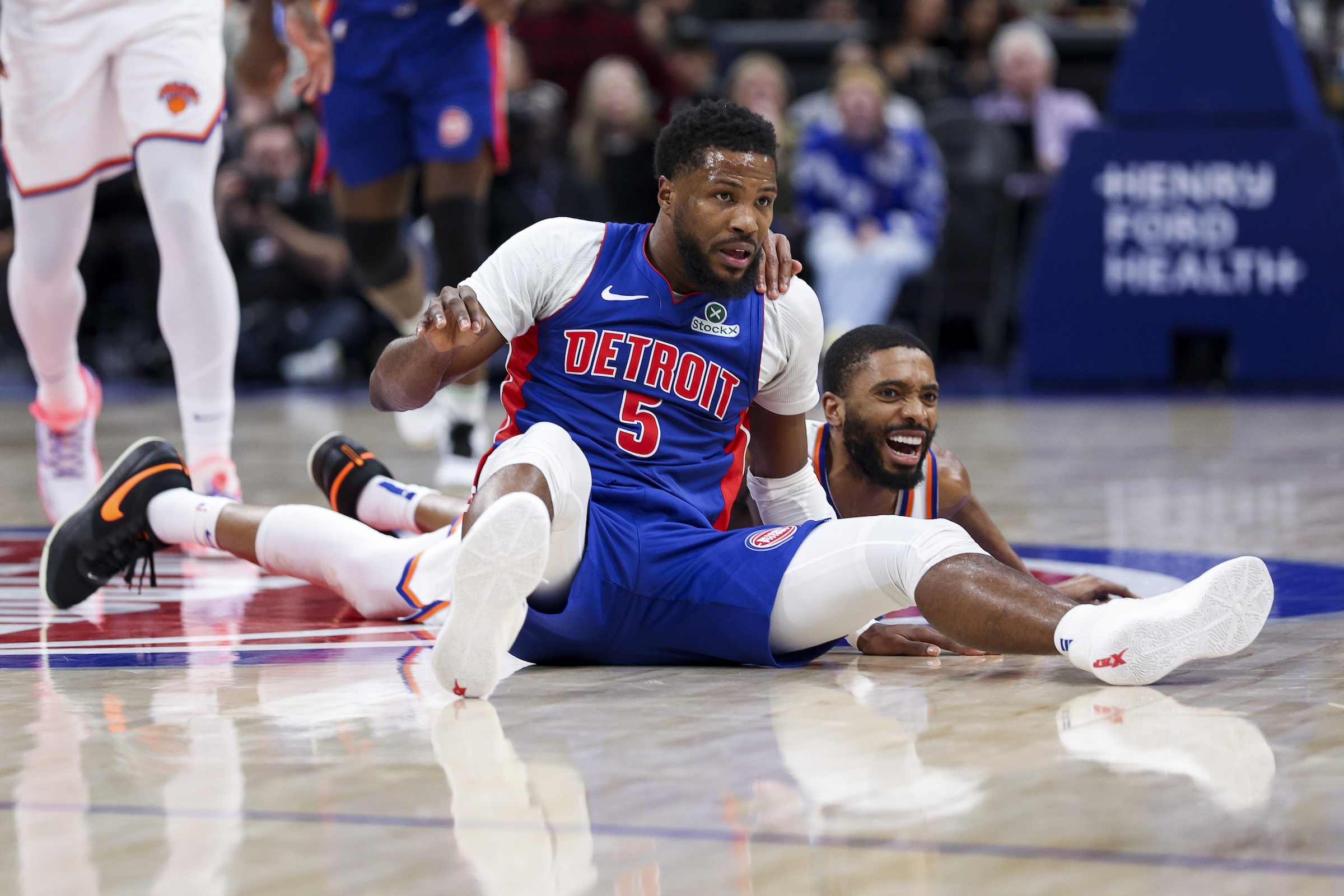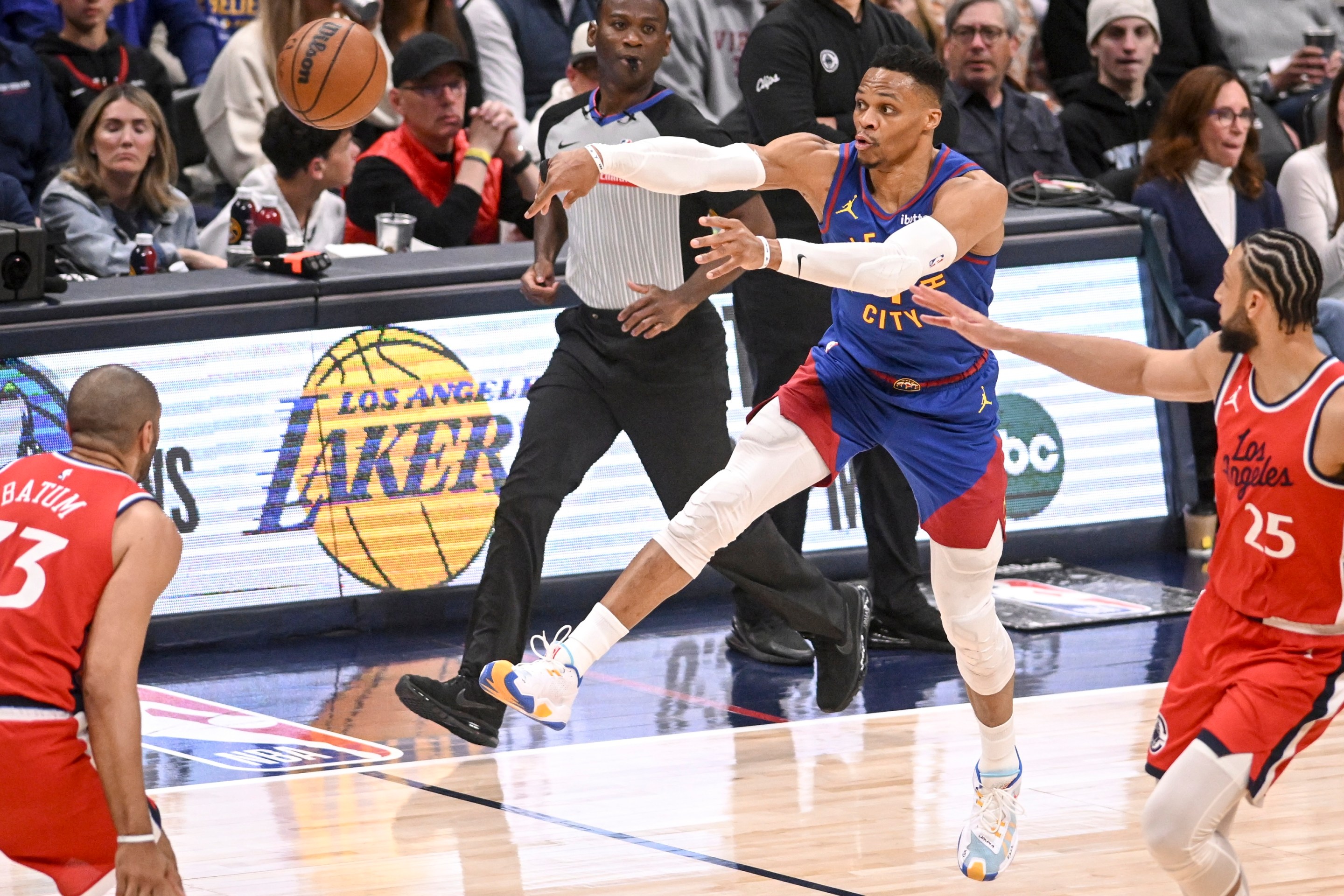You have to hand it to Sedona Prince. The Oregon player's 37-second video of a lacking weight room at the NCAA women's basketball tournament this year has traveled maybe the strangest, stuffiest journey a TikTok ever has: Its final form is a new 118-page gender equity report with an 88-page addendum.
The NCAA enlisted law firm Kaplan Hecker to conduct an "external review of gender equity issues" in March after being criticized for differences between the men's tournament in Indianapolis and the women's tournament in San Antonio. On social media, athletes at the women's tournament shared photos and videos of inferior on-site equipment, marketing, meals, COVID-19 testing and gift bags, among other things. The report was released to the public Tuesday afternoon. It found, not surprisingly, that "the NCAA's broadcast agreements, corporate sponsorship contracts, distribution of revenue, organizational structure, and culture all prioritize Division I men's basketball over everything else in ways that create, normalize, and perpetuate gender inequities." Not only that, they do so in ways that stifle the earning potential of NCAA women's basketball. (The report also found that Gavin DeGraw is a loser! More on this later.)
The report spends quite some time on the NCAA's management structure, and its various failures. They include a "senior vice president of basketball" who in theory manages both men's and women's basketball but whom everyone understands to be concerned only with men's basketball and who himself admits his work is "definitely more tilted toward men's basketball." The women's basketball staff, as a result, operates with almost complete autonomy, and with few opportunities for coordination with the men's basketball staff.
It's hard to come away from the report without some sympathy for those overworked lower-level staffers. While the first two rounds of the women's tournament are usually hosted by the tournament's top 16 seeds and require less coordination at the NCAA level, this year's single-site bubble meant much more work for the women's basketball staff than usual. We learn that the culprit in the weight room debacle was actually a volunteer assistant who didn't read the men's tournament logistics PowerPoint closely enough to notice differences in the weight room arrangements. If there was no malice on the volunteer's part, there was still a organizational structure that asked a volunteer to play catch-up with the men's tournament in the first place. NCAA staff members complained of this "dynamic where men's basketball makes decisions, women's basketball finds out about those decisions, and women's basketball must then choose whether to follow suit." As for the gift bags, "the person responsible for mementos and gifts for the women's tournament had approximately 20 other responsibilities and seven counterparts in men's basketball."
The report's funniest line comes toward the end, in the recommendations section. I wondered if it was tossed in by some mischievous lawyer before remembering that lawyers are so lame the only mischief they get up to at work is reading this website. The line is a chiding "after all, the NCAA is a not-for-profit membership organization, not an 'eat what you kill' business enterprise."
For much of the report, the authors generously evaluate the NCAA on its own dubious terms, as "a not-for-profit membership organization" and its failure on the terms of "commitment to inclusion," or whatever, is no real shock. The more interesting argument the report advances, though, is that the NCAA is about as bad at its real job (making lots of money) as it is at its fake job.
The point is made, meticulously, in the report's analysis of tournament television rights and sponsorship arrangements. The women's tournament television rights, which the report says one expert estimates alone to be worth somewhere between $81 and $112 million annually, were instead bundled with the broadcast rights to 28 other sports in a package sold to ESPN for $34 million annually. Here we have an example of a dismal, familiar cycle in women's sports: Disregard the women's tournament so much that its revenue suffers, and then treat its unimpressive revenue as license to keep disregarding it.
Take the "independent media expert" valuations with a grain of salt (which I do), and still the unrealized revenue potential of the women's tournament is undeniable. The report explains that CBS/Turner manages the sponsorship program for all 90 NCAA championships, but only owns the broadcast rights to the men's basketball tournament, a structure that makes it "exceedingly difficult (if not impossible) for sponsors to activate at events other than the Division I Men’s Basketball Championship." It does ensure that the men's basketball tournament is the most glamorously produced. No Kaplan Hecker report is complete without some withering music criticism: Gavin DeGraw is cited as one of the "lesser-known acts" who headlined a concert organized for the 2019 women's tournament, while high-dollar sponsors got the men Katy Perry, the Jonas Brothers, and the Chainsmokers.
In the grand scheme of gender equity in college sports, the scope of this report is narrow, focused only on the basketball tournaments. Kaplan Hecker is conducting a separate review of the other championships the NCAA operates to be completed later this fall. The report doesn't address the inequities that might exist at actual NCAA member institutions, but it does point out that the NCAA's revenue distribution program, which rewards conferences for performance in the NCAA men's tournament, incentivizes investment in men's basketball programs, while the women's basketball tournament has no equivalent.
What's remarkable about the report, too, is the sheer amount of scrambling it describes. Members of the women's basketball tournament staff are are constantly doing things in response to "public outcry" or "after the disparities between the two championships gained public attention" or "after the news broke" or "in the wake of reporting." In one of the more groanworthy examples of its reactive approach, the NCAA shelled out $40,000 to have the first two rounds of the tournament photographed on very short notice. The report points out that arranging for photography of the early rounds ahead of time (that is, before being yelled at about it) would have been less expensive.
A pattern emerges. Again and again, women's basketball is something NCAA management must be shaken awake to. And whether the association is actually awake to anything now is its own worthy question. The report makes several recommendations—namely, greater coordination between the men's and women's basketball staffs, allowing the women's tournament to use March Madness branding, and hosting both tournaments in the same city—but points out that previous NCAA-commissioned reports on women's basketball have mostly collected dust. What I'd find most disheartening about the Kaplan report, if I worked in NCAA leadership and sought to improve gender equity, is that among people interviewed there was a "deep distrust in the NCAA's willingness and ability to make the changes necessary to achieve that goal." That's the consequence of decades of operating the way the NCAA has since seizing control of the women's basketball tournament in 1982. Spend decades falling down on the job and don't be surprised when no one's reassured by your attempts to start doing it now. How can a sport thrive when the people who steward it are so unambitious?






